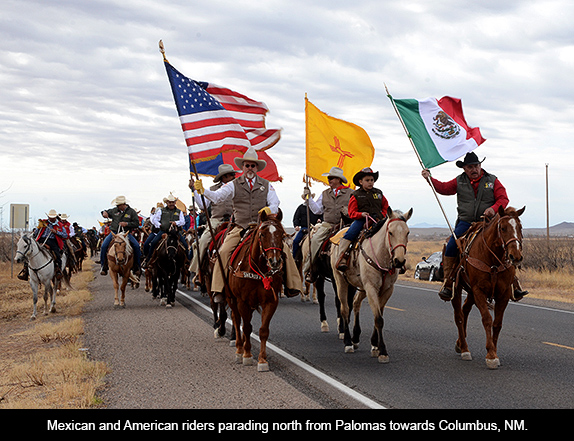
It’s early morning on March 8 and some thirty or forty Mexican riders and horses are working their way through US Customs at Palomas, Mexico. This is the fifteenth annual Cabalgata Binaciónal Villista or Binational Villa Cavalcade, an effort to unify a border that has often been in conflict, no more so than on March 9, 1916 when General José Doroteo Arango Arámbula – better known as Pancho Villa – ordered about 100 of his soldiers to cross the border and raid Columbus, New Mexico. ( It is not clear whether or not he himself was part of the raid.) His troops attacked members of the US Third Cavalry Regiment, burned Columbus and took some 100 horses and mules as well as other supplies. Eighteen Americans were killed and about 80 of Villa’s troops. Villa had been a friend of the US and had appeared with General John F. “Black Jack” Pershing at Fort Bliss, Texas a few years earlier. However, President Woodrow Wilson’s support of Villa’s rival, Venustiano Carranza turned him against the US. That plus the more critical issue of needing supplies led to the raid.
President Wilson responded by sending thousands of American troops after him, using for the first time trucks and airplanes. The commanding officer was Pershing who later commanded the American Expeditionary Force in World War 1. His aide was then -First Lieutenant George S. Patton. If the eleven month chase of Villa proved fruitless, at least it provided training for those future military leaders.
The influence of Villa is still powerful almost one hundred years later. Columbus has the Pancho Villa State Park and there’s a wonderful statue of Villa on his horse in front of the municipal building in Palomas. In addition, Ivonne and Sergio Romero, the owners of the Pink Store in Palomas commissioned a statue of Villa and Pershing shaking hands which is located in the plaza east of their business.
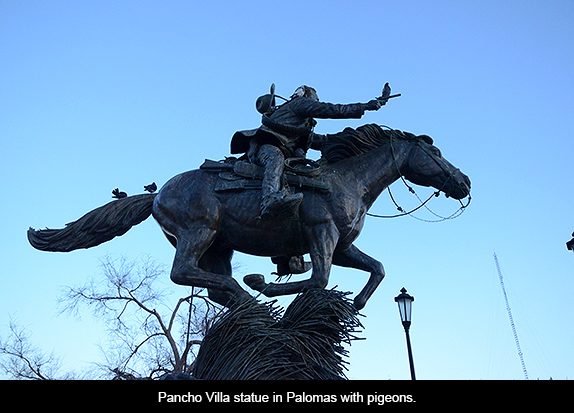
Some fifteen years ago, a coalition of Mexicans and Americans came together to initiate a different way of commemorating Villa’s raid, a way to unite borders via what is called the Cabalgata Binaciónal Villista. Each year hundreds of Mexicans, representing their particular communities, come north to Palomas on horseback and gather for a large fiesta. Then those who have the necessary papers cross the border on their horses early the next morning, join up with riders from the US and parade into Columbus.
I had the opportunity to go to Palomas on Friday, March 7 and meet many of the riders at the stockyards where their horses would be spending the night. This year’s leader was Rafael Camarrillo, the former Presidente of Ascención. His second in command was Sergio Gonzales, the current Presidente of Ascención. Other riders represented all the towns along the route, some like Temosachic, Nicolas Bravo or Galeana too tiny to be found on any map. One of the real stars was Araceli Coss, a serious looking young woman who began her ride on February 23 in Guerrero, several hundred miles to the south. Another was Narciso Martinez Alvarado, a Pancho Villa-look alike who calls himself the International Ambassador of Villismo. The saddle horn on his saddle is shaped like the head of Villa.
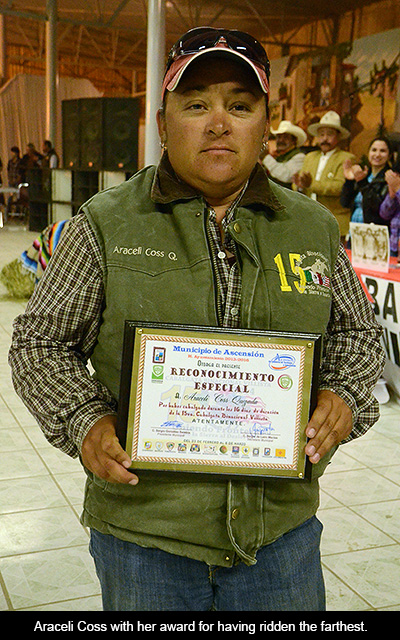
That evening, Palomas’ main street was jammed with cars cruising up and down, a Humvee full of soldiers and horseback riders, more life than I’ve seen in this tiny town in years. Rafael invited me to their fiesta in the Terraza San Vicente which was packed with the families of the riders as well as many local people including a group of Tarahumara Indians. The highlight of the evening was a series of extraordinary young dancers.
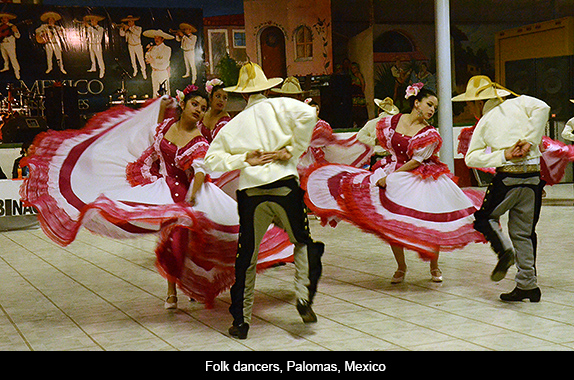
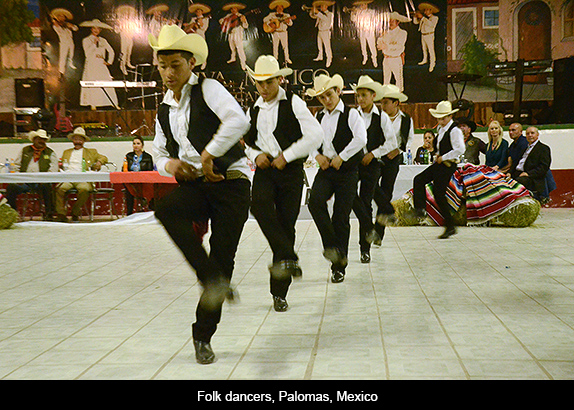
I spent the night in the Hotel Karina and was up before daylight on March 8 to head for the corrals. Narciso was there early, commenting on Mexico’s problems and suggesting that Mexico may need another Pancho Villa. He also mentioned the substantial public support for “El Chapo” Guzman, the recently captured drug lord. “He created jobs, helped people,” he said, comments I have heard time and again.
By 8:20, the riders were saddled up, moving through customs and forming up on the US side. Narciso had donned his Pancho Villa outfit and was posing for photos with the border wall behind him. Dozens of riders then came south from Columbus where a long row of horse trailers was parked. Soon the Mexican and American riders had formed a column and were headed to Columbus where spectators lined the streets. Many of the riders knew each other from previous cavalcades.
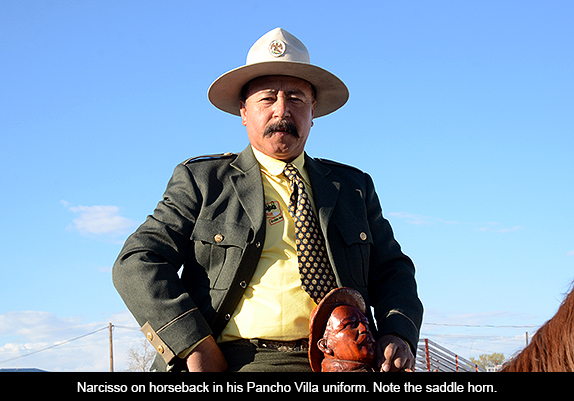
98 years ago Pancho Villa’s men invaded the United States, dozens were killed and an eleven month chase initiated, involving thousands of soldiers. This day, however, was about friendship. This Cabalgata Binaciónal Villista was about “uniendo fronteras” or joining frontiers.


March 28, 2014